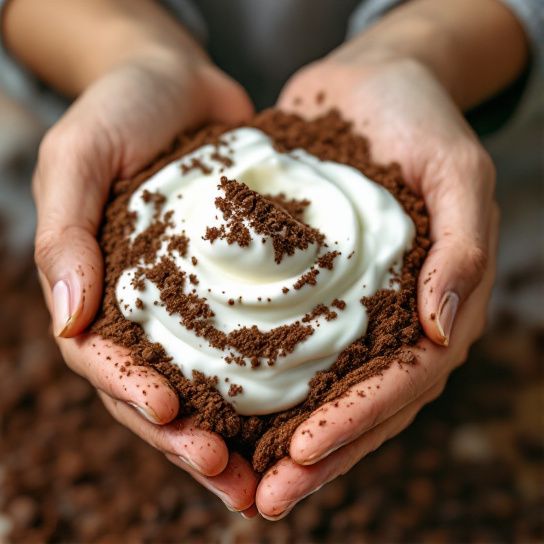Ever look in the mirror, overanalyzing each pore, wondering why every product under the sun hasn’t quite worked its magic? You’re not alone. Trust me, we’ve all been there. And here’s a thought — perhaps the answer doesn’t lie in a fancy bottle on a store shelf. Maybe it’s time to shake things up with *DIY natural skincare*. Yeah, that’s right. Ditch the synthetic stuff and let’s chat about going au naturel.
Why Natural Skincare?
Let’s be real: life’s complicated enough. Shouldn’t your skincare be simpler? There’s something incredibly satisfying about mixing up your own batch of facial remedy concoctions with ingredients right from your kitchen. Not only is it wallet-friendly, but it’s also about taking control over what goes on your skin. Chemicals? Nope, nothing but pure, nature’s magic. Plus, it’s kind of fun, and experimenting is part of the journey.
The Kitchen is Your Beauty Lab
So, what’s in my fridge? Let’s dig in, shall we? We’ll start with **honey**, and no, it’s not just for drizzling on toast. Honey, my friend, is a skincare heavyweight. Packed with antioxidants, it’s like Mother Nature’s salve, calming and healing.
Then, there’s **coconut oil**, that multi-talented jar in the pantry. It’s a natural moisturizer and helps remove impurities too. Trust me on this one, your skin will thank you.
Setting Up Your DIY Skincare Routine

Cleanse & Refresh
Start simple. That face wash you reach for every morning might be taxing on your skin. Try whipping up a gentle, *diy facial cleanse*. Mix coconut oil with honey — yup, just those two. Rub it in, let it mingle with your skin. Feels kinda weird at first, but breaking routine can be liberating. And when you rinse it off? Happy skin reveal.
Exfoliation Station
Okay, friend, let’s exfoliate. Don’t overthink this step. Ground oatmeal or coffee grounds make excellent scrubs. Pair with yogurt for a creamy base. Massage gently. Circles, no rushing, imagine painting strokes on a canvas. Your skin is art, after all.
Tone Time
An often overlooked step, but essential nonetheless. Green tea or rose water works wonders as a natural toner. Brew some tea or distill those petals — easy. Splash on or swipe it gently with a cotton pad. Crisp, refreshing, and oh-so-easy.
DIY Masks and Treatments
No skincare journey is complete without some indulgent masks. *DIY natural skincare masks* are incredibly customizable. So, what are we waiting for?

Avocado and Honey Mask
Avocado isn’t only good for guac. Mash it up and mix with honey for a creamy delight packed with nutrients. Leave this one on for about 15 minutes, then rinse. Plump, radiant skin awaits.
Clay and Apple Cider Vinegar Mask
Clay masks are heaven on Earth. Mix **bentonite clay** with a splash of apple cider vinegar until it’s paste-like. Simple. It’s a bit like a spa day in your own bathroom. Plus, it gets all the junk out from deep within your pores.
Problem Solving with Natural Methods
Acne bothering you? Tea tree oil comes to the rescue. A dab on trouble zones before bed works like magic. Seriously, this natural ingredient is something you’ll celebrate. Dry patches annoying you? Oatmeal baths aren’t just for those stress-free, leisurely Sundays. Regular use softens and soothes irritated skin.
While these dreamy remedies are great, keep in mind everyone’s skin reacts differently. Give it time, and don’t fret the small stuff. Patience is part of the skincare plan.
Don’t Forget to Moisturize

Hydration station, everyone! Aloe vera’s a keeper. Scoop out its gel, slap it on your skin wherever it feels thirsty. It’s lightweight, absorbing quickly. Shea butter, another star, offers a deeper moisture quench. Consider it a cozy blanket for your skin cells.
Making Skincare Sustainable
Let’s also weave in the words “sustainably chic,” shall we? Making your own products isn’t just good for the skin — it reduces waste. Reuse jars, recycle packaging from your kitchen ingredients. Be crafty! It somehow feels even better slathering on a perfectly gentle creation directly from your own two hands and conscience.
Tips to Get Started on Your DIY Natural Skincare Journey
- Research Reminders: Always test new mixtures on a small skin patch.
- Shelf Life Insights: Be aware that natural elements have a shorter lifespan. Make small batches and use them up!
- Routine Rhythms: Consistency over time awards the clearest, glowiest benefits.
- Product Diary: Yeah, keep tabs on items your skin ends up adoring.
Wrapping It Up
Every skin journey is unique; no one-size-fits-all here. Let DIY natural skincare be your wholesome exploration. Laugh off the times you feel more like a salad than a person. Reboot your beauty routine with kindness. Keep it light, find the joy in simplicity, and bask in nature’s own glow, and remember who’s in control of your skincare saga — you!
There, that wasn’t so daunting, was it? Give it a try, have fun. Trust me, getting a little earthy with your beauty regimen is easier than you’d think.
Frequently Asked Questions
What are the benefits of using a hair mask in my hair care routine?
Using a hair mask can provide several benefits, including hydration, smoothing, strengthening, curl definition, heat protection, and damage repair. Hair masks infuse the hair with moisture, help coat the hair shaft to seal split ends, reduce breakage, and protect the hair from heat styling and environmental damage[1][4].
What ingredients should I look for in a hair mask?
Effective hair masks often include ingredients such as coconut oil, argan oil, shea butter, honey, avocado oil, green tea, and coconut water. These ingredients provide nourishment, moisturize, and protect the hair, offering benefits like softening, moisturizing, and protecting against damage[2][5].
How often should I use a hair mask in my routine?
You should use a hair mask whenever your hair feels dry, unmanageable, or in need of intense hydration. This can vary depending on your hair type and needs, but generally, using a hair mask once or twice a week can help maintain healthy and moisturized hair[1][4].
How do I apply a hair mask for the best results?
To apply a hair mask effectively, shampoo your hair first, then apply the mask, focusing especially on the ends where hair tends to be the most damaged. Leave the mask on for anywhere from 10 minutes to overnight, depending on the type of mask and your hair’s needs[1][4].
References


